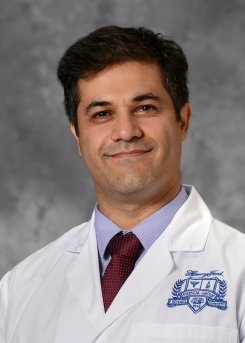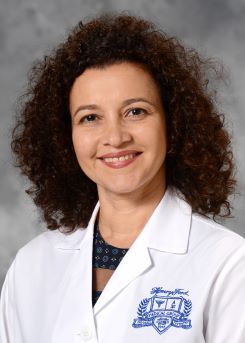OMICS and Bioinformatics Laboratory
The Omics and Bioinformatics Laboratory specializes in the analysis and integration of multi-omics data, with a particular focus on epigenomic data from central nervous system (CNS) tumor tissues and liquid biopsies. Our primary aim is to deepen the understanding of CNS tumor biology and uncover actionable treatment targets.
The Omics Lab operates in a highly collaborative and integrative manner, working closely with other research groups and actively participating in large consortia such as the TCGA, ICOM, GLASS, and Brain Liquid Biopsy. By leveraging advanced computational methods and artificial intelligence, our team develops innovative, noninvasive models and bioinformatic open-source tools that are crucial for translational research, clinical applications and personalized and precision neuro-oncology through shared expertise and collective research endeavors.
For Research Collaborations
The following survey collects information about the resources that you would like to request from the Hermelin Brain Tumor Center. This initial information will be reviewed by our committee to determine whether the resources you need are available and appropriate next steps. Take the survey.
-
Genomics and Epigenomics
The goal of the Genomics and Epigenomics Computational Laboratory is to identify and understand the molecular changes associated with human cancers. Recently, we published our findings on the epigenomic and genomic features of all adult gliomas (including low-grade glioma [LGG] and glioblastoma [GBM]) and identified two distinct novel subtypes classified based on both IDH status and epigenetics. Defined by epigenetics, these subtypes elucidate a genomic signature that defines tumor progression.
We are also developing novel integrative analysis tools and methods to understand the link between specific intergenic regions and gene regulation associated with somatic and germline risk elements in cancer. By harnessing public datasets from The Cancer Genome Atlas (TCGA), National Institutes of Health (NIH) Epigenomics Roadmap and Encyclopaedia of DNA Elements (ENCODE), and integrating those with our next-generation sequencing data, we are hopeful that we can reach the ultimate goal of revealing the genomic regions associated with tumor progression and risk.
Understanding Tumor biology and Identifying druggable targets for novel glioma subtypes (G-CIMP low and G-CIMP high). Using advances in next-generation sequencing and insights into the relationship between transcription factor, histone modifications and DNA methylation, our goal is to investigate the molecular features of glioma progression between IDHmut and IDHwt. In our report (Ceccarelli et al., Cell 2016), we characterized glioma subgroups as they relate to specific genetic mutations associated with IDH1 mutation and 1p19q codeletion and other epigenetic markers. Seven distinct DNA methylation subgroups were identified in adult brain cancer by performing comprehensive, genome-scale DNA methylation profiling of 932 primary brain tumors and 77 non-tumor brain samples.
A better understanding of the epigenetic and transcriptomic profile of gliomas could facilitate the development of novel selective therapies. Thus, considering the specific biological question, the technique to profile epigenomic regions of interest integrated with associated transcriptomic differences and that our glioma samples will be derived from a wide international tumor bank, we believe our study will bear novel results and will have significant scientific impact. Furthermore, we believe that by establishing the epigenetic analysis pipeline for this particular project we will also lay the groundwork for future cancer projects that may be analyzed for their methylome and transcriptome profiles.
Principal Investigator
Houtan Noushmehr, PhD

Email: hnoushm1@hfhs.org
As a professor and independent research investigator, my goal is to identify and understand the genomic and epigenomic changes associated with human cancers. Recently, we published our findings on the epigenomic and genomic features of all adult gliomas (including low-grade glioma [LGG] and glioblastoma [GBM]) and identified two distinct novel subtypes classified based on both IDH status and epigenetics. Defined by epigenetics, these subtypes elucidate a genomic signature that defines tumor progression.
My work also involves developing novel integrative analysis tools and methods to understand the link between specific intergenic regions and gene regulation associated with somatic and germline risk elements in cancer. By harnessing public datasets from The Cancer Genome Atlas (TCGA), National Institutes of Health (NIH) Epigenomics Roadmap and Encyclopaedia of DNA Elements (ENCODE), and integrating those with my own next-generation sequencing data generated by whole-genome bisulfite/ChromatinIP sequencing, I am hopeful that we can reach the ultimate goal of revealing the genomic regions associated with tumor progression and risk.
Research Interests
My research experience has provided exposure to many different areas of science including human physiology and disease, molecular biology, genetics, and bioinformatics and biostatistics. During my doctoral training with Dr. Peter W. Laird, I gained new insight and understanding of the epigenetic changes associated with glioblastoma multiforme, a primary brain tumor. This work resulted in a first author paper published in 2010 in Cancer Cell, and the tools I developed have been applied to a number of other cancer-related projects. Not only did this work spark my scientific curiosity in the field of epigenomics (specifically DNA methylation), it also fulfilled an exciting collaborative experience. As a member of The Cancer Genome Atlas (TCGA), I traveled and worked closely with a number of different scientists around the nation, including researchers from Broad/Harvard University, MD Anderson, Baylor and NCI. Although most of my work involved studying brain cancer, my focus has always been understanding epigenomics in complex diseases and, more importantly, integrative approaches to understanding the heterogeneity of both tumors and tumor biology. The advent of high-throughput technology provides a new look into the epigenomics of cancer and reveals new areas of personal epigenomics therapy.
My post-doctoral training inspired a strong appreciation of integrative science and how it can aid in deciphering the genomic risk elements associated with prostate and breast cancer. I developed a tool called FunciSNP which interrogated all candidate prostate cancer-associated single nucleotide polymorphisms (SNPs) with available and known epigenomic elements defined by histone modifications. This effort identified several candidate functional elements within the intergenic regions associated with prostate, breast and ovarian cancer.
As a professor in bioinformatics and epigenomics since 2012, I’ve had the pleasure of training the next generation of molecular biologists to data mine the enormous publicly available data to better understand the relationship between clinical outcome and tumor biology. These efforts are aimed at identifying biological markers for both prognostic applications but to also identify possible drug targets for improved therapy for patients suffering from complex diseases.
Ana Valeria Noushmehr, Ph.D.

Email: acastro1@hfhs.org
I am a physician-scientist specializing in Endocrinology, with over 25 years of experience in medical practice and teaching at prestigious universities in Brazil. Currently, I serve as a Staff Scientist at the Hermelin Brain Tumor Center, Department of Neurosurgery, Henry Ford Health, and hold an Assistant Professor-Research position in the Department of Physiology at Michigan State University. My academic training and research have been cultivated in leading institutions such as Children’s Hospital Los Angeles, Cedars-Sinai Medical Center/UCLA, University of Southern California, and Henry Ford Health/Michigan State University. My expertise spans molecular biology, neuro-oncology, epigenetics, human physiology and bioinformatics.
Research Interests
My current research focuses on unraveling the biological and clinical significance of DNA methylation and other epigenetic mechanisms in the development and progression of CNS tumors, including pituitary tumors, meningiomas and gliomas. My team and I are dedicated to identifying prognostic markers and potential drug targets through both invasive (tissue-based) and non-invasive (liquid biopsy) approaches. Our ultimate goal is to advance personalized management and treatment strategies for patients with CNS tumors.
.svg?iar=0&hash=F6049510E33E4E6D8196C26CCC0A64A4)

/hfh-logo-main--white.svg?iar=0&hash=ED491CBFADFB7670FAE94559C98D7798)